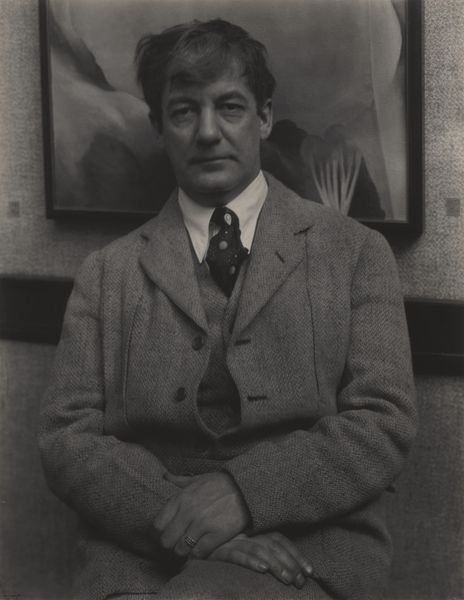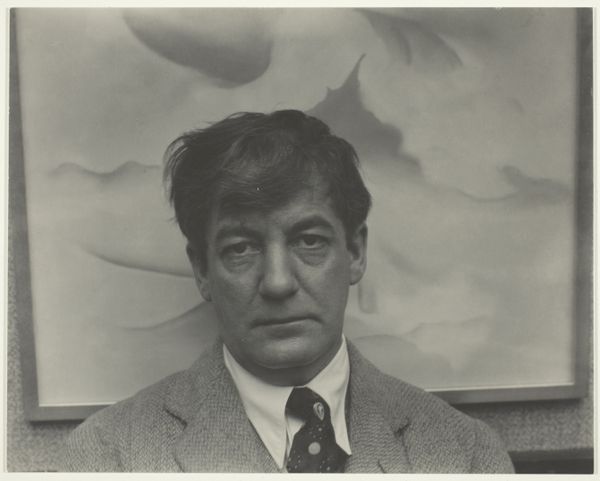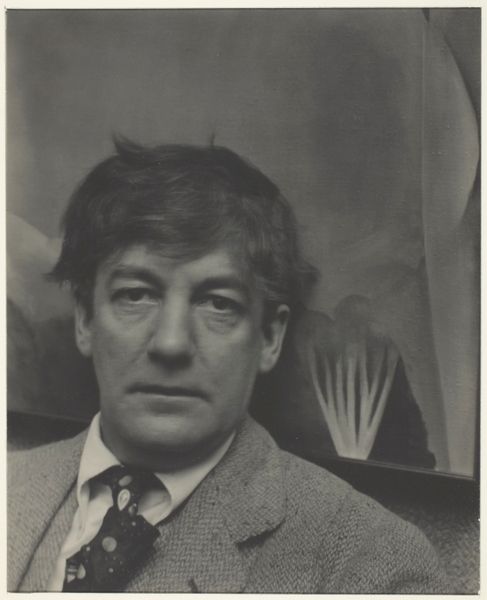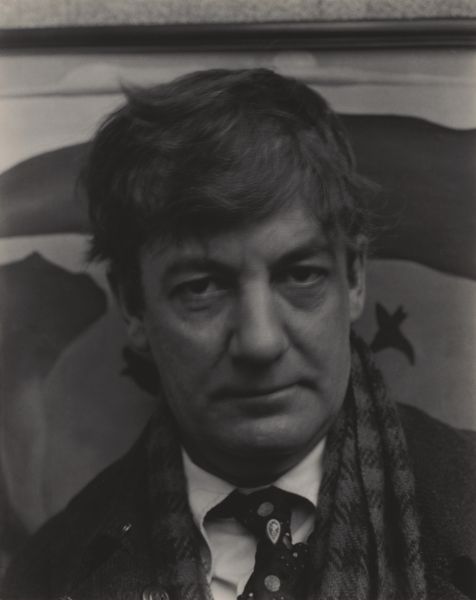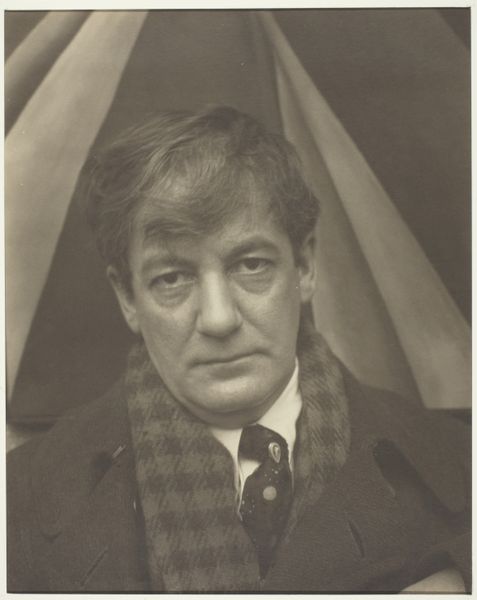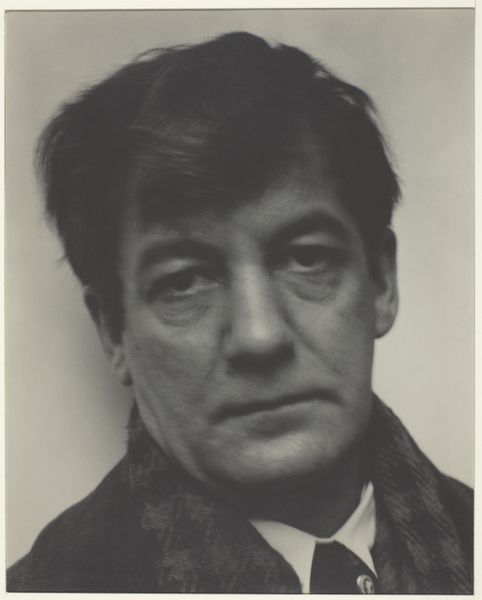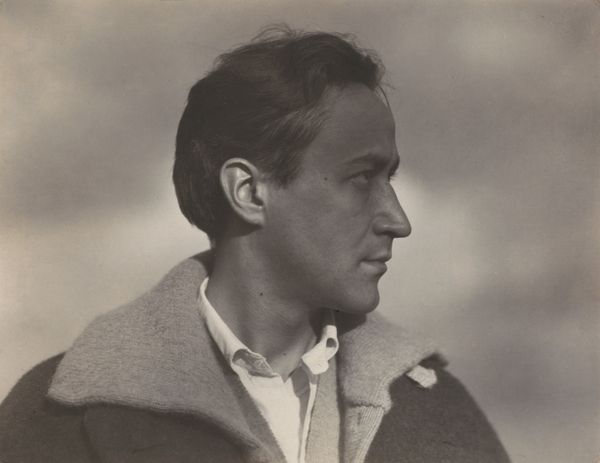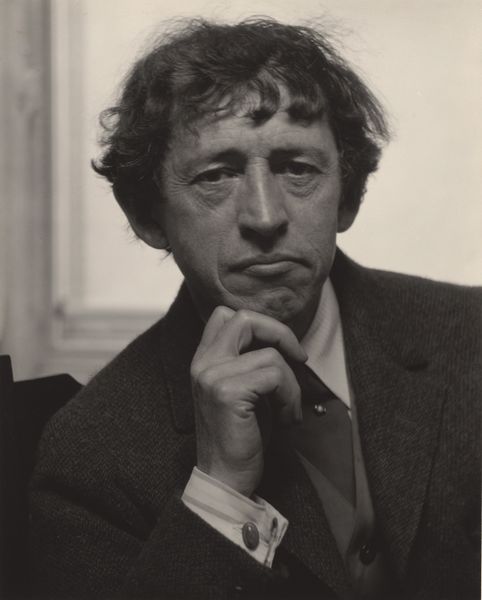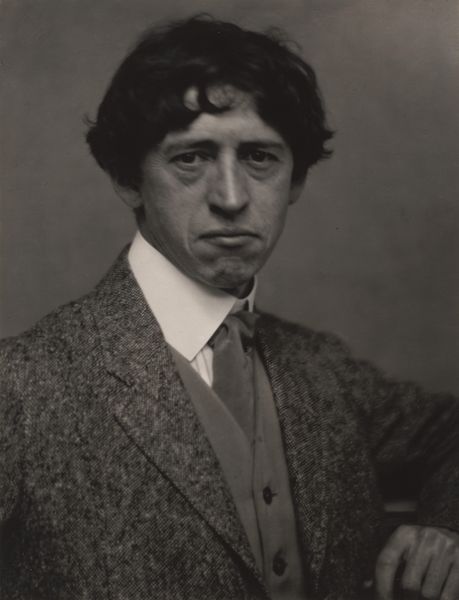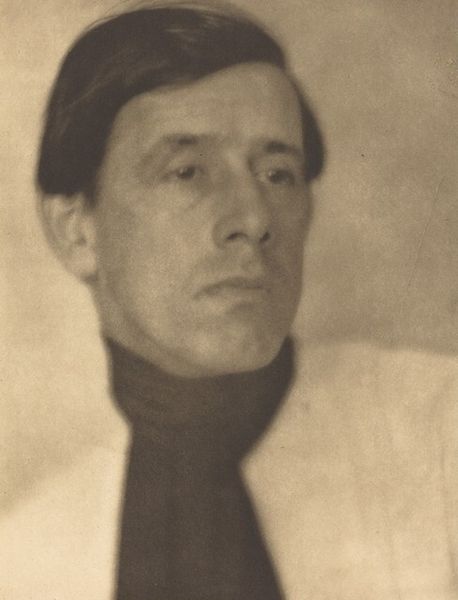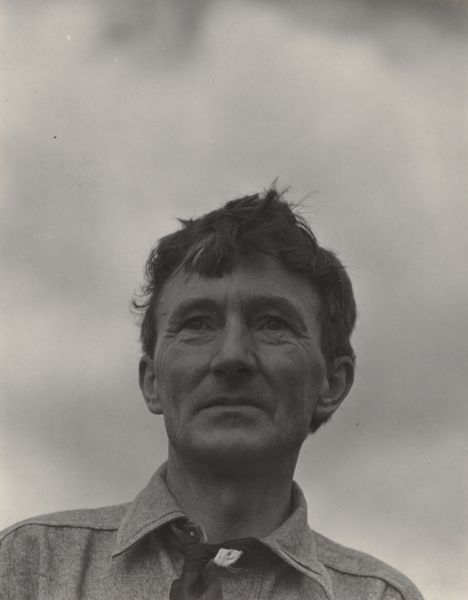
photography
#
portrait
#
portrait
#
photography
#
modernism
Dimensions: sheet (trimmed to image): 22.9 × 18.9 cm (9 × 7 7/16 in.) mount: 56.4 × 45.7 cm (22 3/16 × 18 in.)
Copyright: National Gallery of Art: CC0 1.0
Curator: Here we have Alfred Stieglitz’s modernist portrait of Sherwood Anderson, a gelatin silver print made in 1923. The photograph features a mid-shot of Anderson. What strikes you first about this image? Editor: There’s a kind of quiet intensity in his gaze, almost unsettling. The soft focus lends it a timeless quality, but there's also this underlying feeling of melancholy, or perhaps introspection? It’s evocative, but also difficult to decipher fully. Curator: It’s true. Stieglitz’s approach to portraiture wasn't about capturing mere likeness. He saw his subjects as representative of larger cultural shifts, individuals grappling with modernity. Anderson, after all, was a key figure in the literary movement that challenged conventional narratives. Editor: Absolutely, and understanding that literary context adds layers to the photograph. Anderson pushed boundaries. Is this photograph making similar efforts in pushing boundaries? The framing, that off-kilter tie featuring the solar system, perhaps hinting at Anderson's cosmic musings or rejection of societal norms? Curator: The tie is an intriguing detail. While it feels somewhat whimsical, it underscores the complexities within Anderson himself, a man often wrestling with industrialization, with alienation, and with the loss of traditional values in his work. Stieglitz uses photographic techniques to mirror these complexities and psychological depths. Editor: How fascinating to see a visual manifestation of these struggles in photographic form, the challenge being how art is shaping identity in its moment of creation. Thinking about Stieglitz as a cultural figure also—his role in promoting modernism in America. What was the public and critical response to Stieglitz’s portraits at that time? Were they considered radical? Curator: His modernist approach to art, and indeed photography, wasn't always well received, but this and many other portraits solidified the place of photography within fine arts and further secured his legacy. Ultimately, it is about art mediating new realities and new identities for those caught within cultural and societal shifts. Editor: Thank you. It has been very illuminating to see how socio-historical moments interplay through an individual's portrayal of an artwork.
Comments
No comments
Be the first to comment and join the conversation on the ultimate creative platform.
